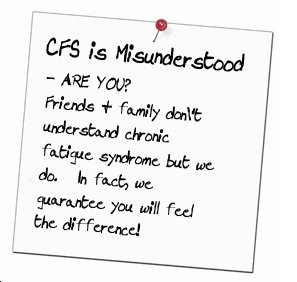Arthritis Series Part III: Most Common Types Of Arthritis Discussed
Acute Gouty Arthritis
Gout is described as a metabolic disorder characterized by the body’s inability to properly metabolize uric acid. Uric acid tends to accumulate in a person’s blood stream due to the body’s tendency to produce too much uric acid during purine metabolism, or the body’s inability to excrete uric acid.
To some, this accumulation of uric acid will only lead to hyperuricemia and not produce any gouty symptoms. On others, it leads to the formation of urate crystals that deposit themselves in several tissues of the body. The deposit may occur in the kidneys, or between joints particularly in the big toe.
Gouty arthritis occurs when a large amount of urate crystals deposit themselves in the synovial fluid and synovial linings (fluid and lining of joints).
This in turn will cause an autoimmune response where antibodies will attack the crystals, initiating the body’s inflammatory response. Once this happens, chemical mediators such as prostaglandin will be activated, producing redness, pain, and swelling. The pain is characterized as being so painful, the mere touch of a bed sheet can cause the most excruciating pain.
Causes of Acute Gouty Arthritis
The exact cause of gout is unknown. Men suffer from gout more in comparison to women, and it commonly happens after they reach the age of puberty, and peaks around the age of 75. Women who are predisposed to gout suffer from its signs and symptoms once they reach menopause. Other risk factors for gout are:
• Obesity
• Alcohol intake
• High blood pressure
• Kidney problems
• Medication such as thiazide diuretics
• Medical conditions such as sickle-cell anemia, leukemia, or lymphoma among others.
Signs And Symptoms
The signs of and symptoms of gouty arthritis occurs after several years of uric acid and urate crystal accumulation on the joints and other body organs. These signs and symptoms typically include:
Tophi: this is the collection of urate crystals between joints of the big toe and elbow, in the earlobe and Achilles tendon.
This lump is characterized with
Joint pain: unlike the joint pain of osteoarthritis and rheumatoid arthritis, joint pain in gouty arthritis begins suddenly. It can involve one or several joints at the same time, with the great toe, knee, or ankle joints being mostly affected. The pain is often characterized as severe, stabbing, and excruciating. The pain is so severe, that a touch of a bed blanket can cause the person to either lose sleep or wake up in the middle f the night.
Stiff, swollen joints that may be warm to the touch and ruddy red in appearance
Fever can occur during acute gout attacks due to activation of the inflammatory response.
These signs and symptoms can disappear for a long period of time, and can occur several times in a year. Some succeeding attacks can last longer compared to other episodes.
Diagnostic Tests
Doctors may prescribe several diagnostic tests to confirm gouty arthritis and rule out any other systemic conditions.
• X-Ray – this is not a conclusive test to diagnose the presence of gout. Most patients seek medical attention because of severe joint pain in the absence of tophi or bone erosion. X-ray done during the late stages can reveal the size and location of the tophi and the extent of bone erosion if there is any.
• Uric acid blood test – this test is done to detect the level of uric acid in your blood, but also not a conclusive test to diagnose gout. People with high levels of uric acid in their blood do not necessarily manifest gout symptoms. This test, however, can determine if the current medication you’re taking is lessening the level of uric acid levels in your body.
• Joint aspiration (arthrocentesis) – will determine if the joint inflammation is caused by presence of urate crystals in the joint fluid or a bacterial infection or autoimmune disorder. Sometimes calcium pyrophosphate can be found in the synovial fluid causing a condition called “pseudogout.”
• Synovial biopsy – this can help rule out any other joint condition such as fungal arthritis, rheumatoid arthritis, or coccidioidomycosis.
Treatment
There are two types of treatment for gouty arthritis:
Home Therapy
There are two levels of home therapy: prevention of attacks, and alleviation of onset of signs and symptoms.
Prevention
Dietary modification: lessen the intake of food high in purine such as meat, seafood, and legumes. You may also need to limit your fat intake by reducing your consumption of salad dressings and fried food.
Limit the intake of alcohol: some alcoholic beverages like beer and wine contain high levels of purine. Aside from that, alcohol can greatly reduce your body’s ability to flush out uric acid from your body, causing it to accumulate in your blood stream.
Lose weight: maintain a weight that is ideal for your height.
Exercise: moderate exercise can help you promote blood circulation, preventing blood stasis that can predispose you to urate crystal accumulation on joints and body organs.
Attack Relief
Never put pressure on your affected extremity and rest it for as long as the attack is in progress, plus an additional 1-2 days from the remission of symptoms.
Elevate the affected joint in a level higher above your chest if possible.
Use ice packs to lessen the inflammation and dull the pain. Place the icepack on the affected joint for 15-20 minutes.
Consume as much as 3 liters of water to help your body flush out uric acid.
Medication
There are several medications that a doctor would prescribe to help lessen the symptoms of gouty arthritis and prolong the interval between attacks.
Allopurinol – this is the best medication that can help slow down the formation of uric acid in the body, making it very effective in lowering your uric acid level.
Inform your physician if you’re taking azathioprine, 6-mercaptopurin, or cyclophosphamide. Your dose must be adjusted accordingly to prevent any adverse drug-to-drug interaction. Avoid the use of ampicillin during your medication for it can cause the development of rash. Discontinue your medication if you are experiencing hypersensitivity to the drug that is manifested by fever, rash, kidney, and liver failure, as well as bone marrow failure.
Probenecid – this medication helps you in eliminating excess uric acid via the kidneys. It is important that you drink at least 2 liters of water, though 3 liters would be most advisable in order to prevent uric acid stones from forming in your kidneys.
NSAIDs – these can be used to help to lessen and control the inflammation.
Colchicine – helps treat acute attacks as well as prevent recurrences. It is given a treatment of 10 doses, once every hour. Treatment is stopped when the therapeutic goal is reached, the number of prescribed doses have been consumed, or side effects such as nausea, vomiting, or diarrhea. This is the reason why this is not commonly used for treating the symptoms of gouty arthritis.
Once your doctor has confirmed the presence of gouty arthritis, you must always maintain your regular follow-up check up with your doctor. Gouty arthritis is addressed in two different ways: treating the signs and symptoms and preventing the recurrence of attacks. Maintain your medication to help you live with your gouty arthritis and limit the level of deformity that may occur due to recurrent attacks.
the A to Z directory of dealing with Health Problems & Self Care Strategies for natural remedies to your health issues.

Subscribe to get your weekly "Health Success Magazine" with a new complete & comprehensive Health Report in every edition!

to “Your Health Success”
our weekly F’R’E’E’ Newsletter
If you would like a free no-obligation private consultation or to contact Warren Tattersall for more information, please click here >> Contact Us

Click the books above to learn more about how we treat CFS naturally, to get your life back!
You will find many assorted Health Reports available for download free to you on this website!
Our free Health Success Reports are each available for you to download when you subscribe to receive them and their 7 part eCourse.
You can unsubscribe at any time, but we are sure you will want to receive all the email lessons of these informative ecourses.
Read more HERE to select the REPORT subjects of most interest (or concern) to you.









